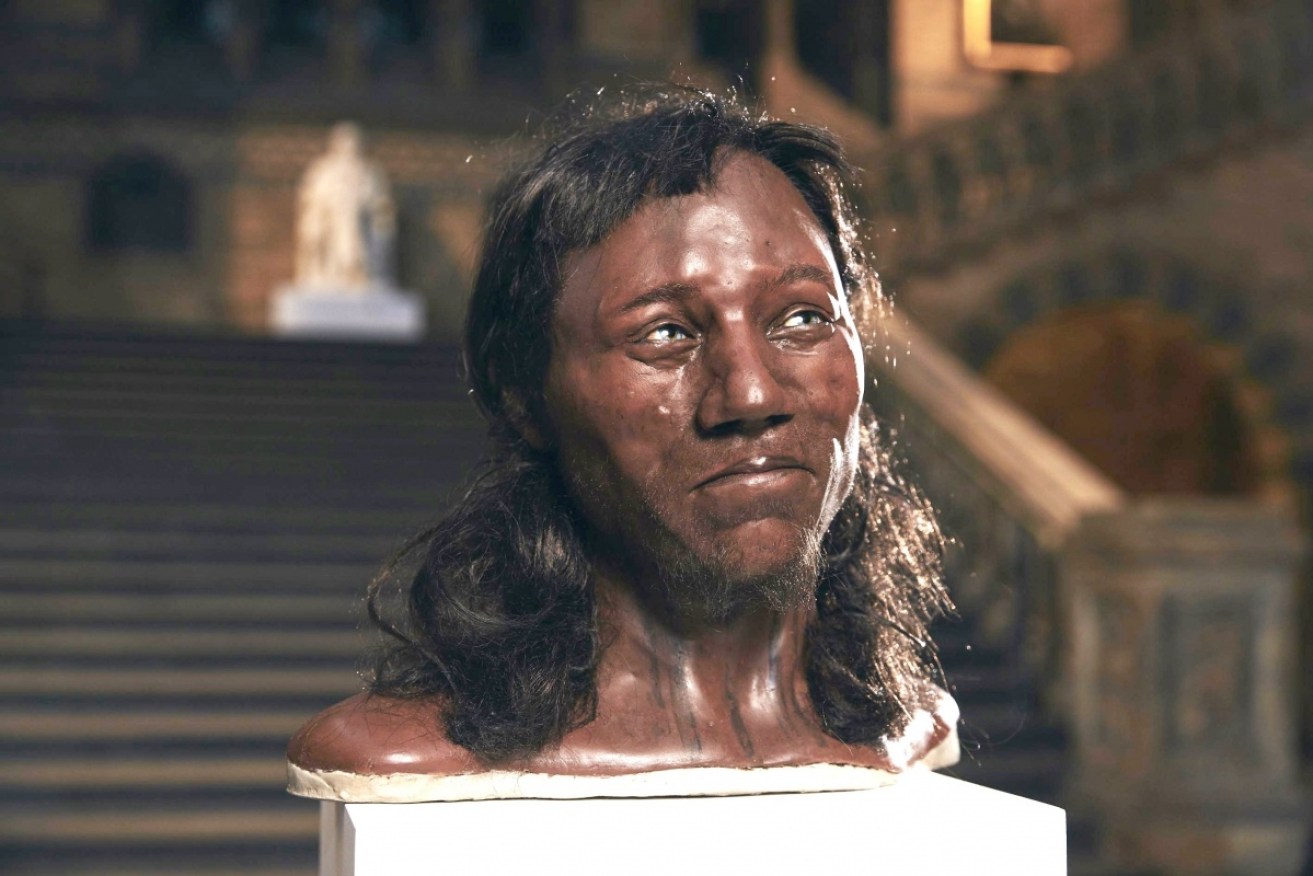DNA shows ancient Briton had dark skin, blue eyes


Scientists assessing the DNA of Britain's oldest, nearly complete skeleton, Cheddar Man, have found he had dark skin. Photo: AAP
A groundbreaking DNA analysis has shown the first modern Britons, who lived 10,000 years ago, had dark skin and blue eyes.
The findings come after scientists extracted DNA from “Cheddar Man”, Britain’s oldest complete human skeleton, suggesting that the lighter skin pigmentation now seen as typical of northern Europeans is far more recent than previously thought.
According to researchers from University College London (UCL) who took part in the project, the first Briton had “dark to black” skin colour.
“Cheddar Man” Britain’s oldest, nearly complete human skeleton, skin colour was described as “dark to black” by the scientific team which also included researchers from London’s Natural History Museum, where the skeleton is on display in the Human Evolution gallery.
“To go beyond what the bones tell us and get a scientifically based picture of what he actually looked like is a remarkable, and from the results quite surprising achievement,” said Chris Stringer, the museum’s research leader in Human Origins.
Unearthed in 1903 in a cave at Cheddar Gorge, in the county of Somerset, the Mesolithic-era man was a hunter-gatherer whose ancestors migrated into Europe at the end of the last Ice Age.
Three hundred generations later, around 10 per cent of indigenous British ancestry can be linked to Cheddar Man’s people, scientists say.

The London Natural History Museum shows off the skeleton of Cheddar Man. Photo: AAP
As part of a project commissioned by Britain’s Channel 4 television station for a documentary, experts from the Natural History Museum’s ancient DNA lab drilled a tiny hole into the skull in order to extract genetic information.
The DNA was unusually well-preserved, enabling the scientists to sequence Cheddar Man’s genome for the first time and to analyse it to establish aspects of his appearance.
Then, a pair of Dutch artists who are experts in palaeontological model making, Alfons and Adrie Kennis, used a high-tech scanner to make a three-dimensional model of Cheddar Man’s head.
The model, which UCL and the Natural History Museum said rendered Cheddar Man’s face with unprecedented accuracy, shows a man with dark skin, high cheekbones, blue eyes and coarse black hair.
– with AAP








